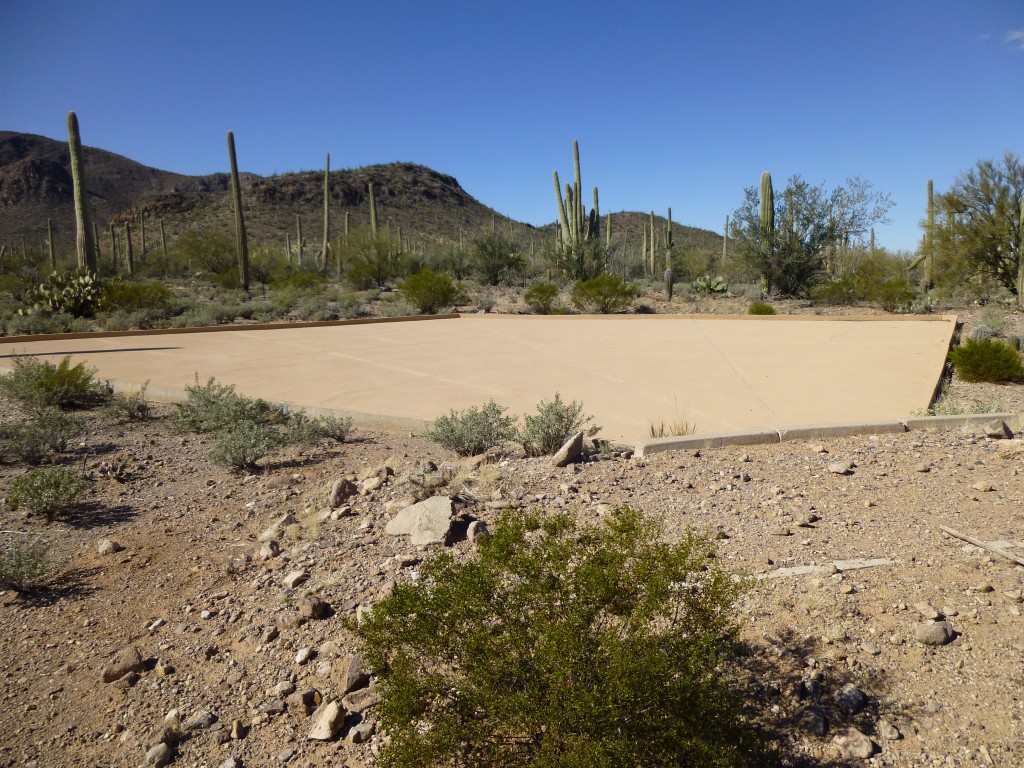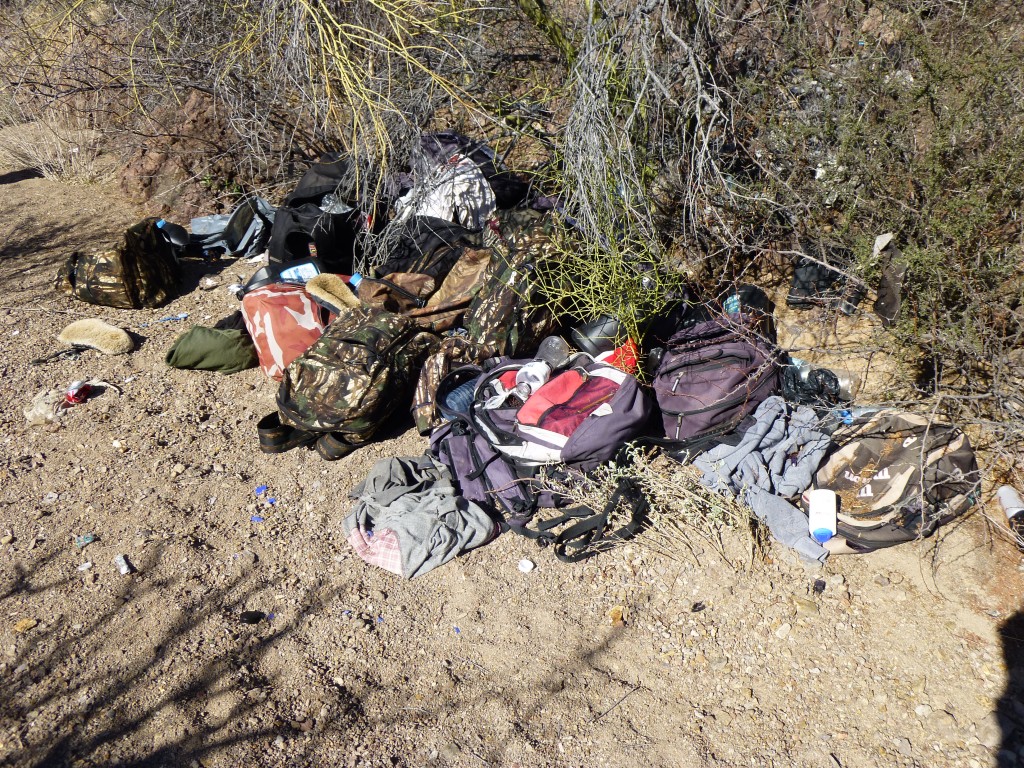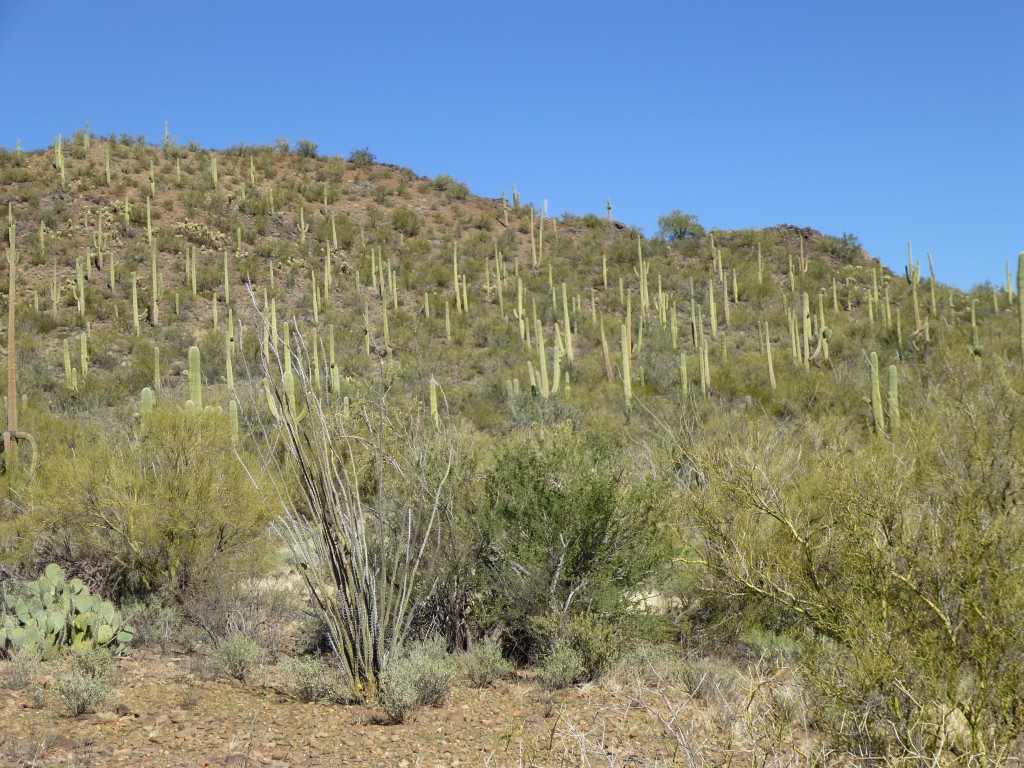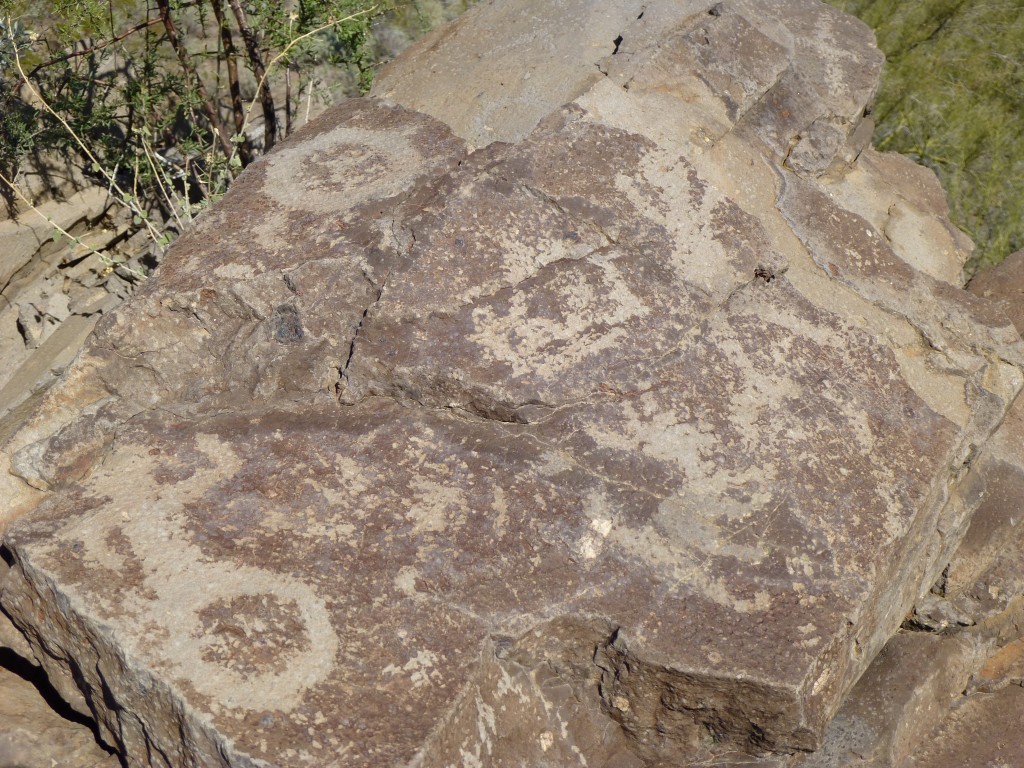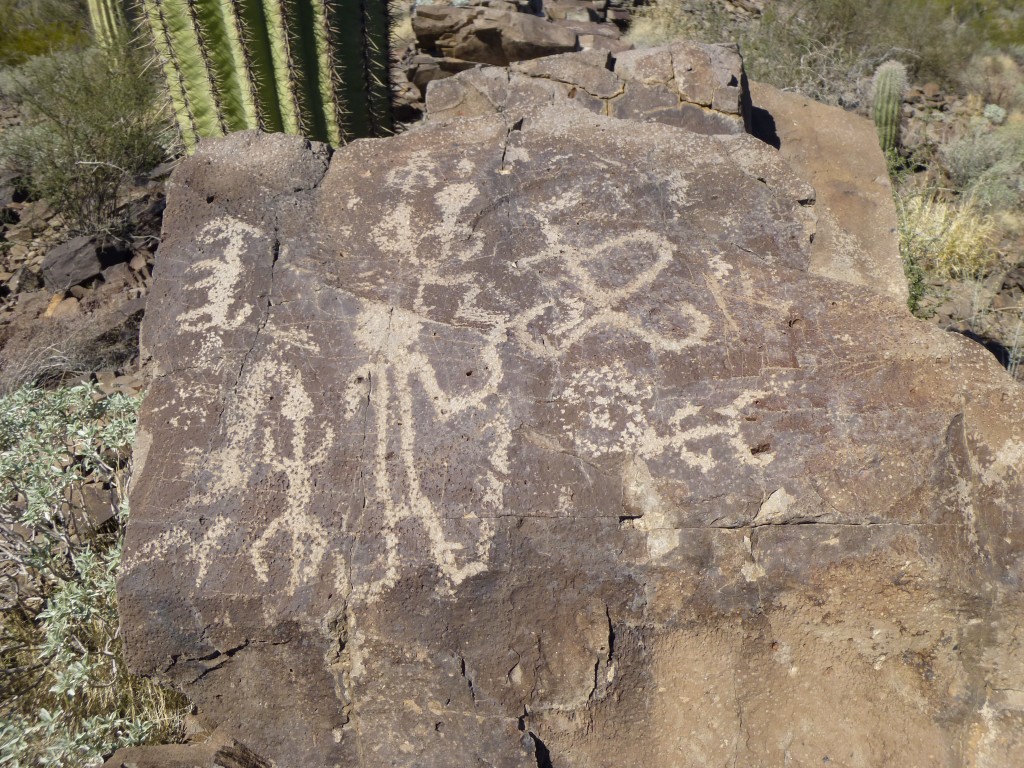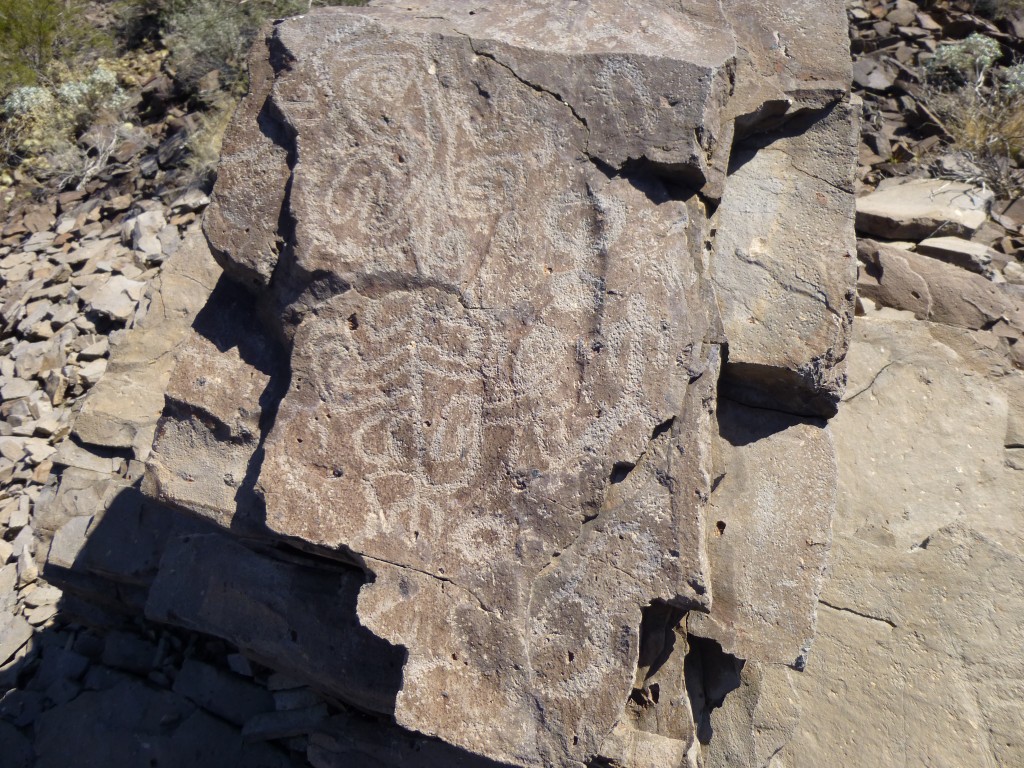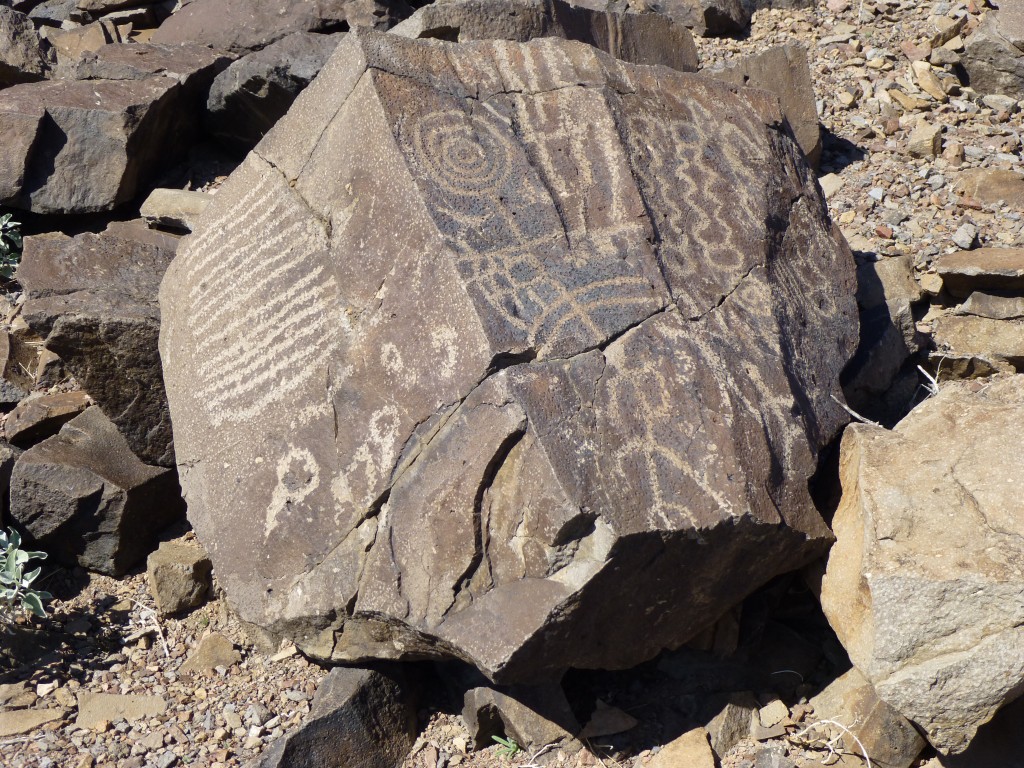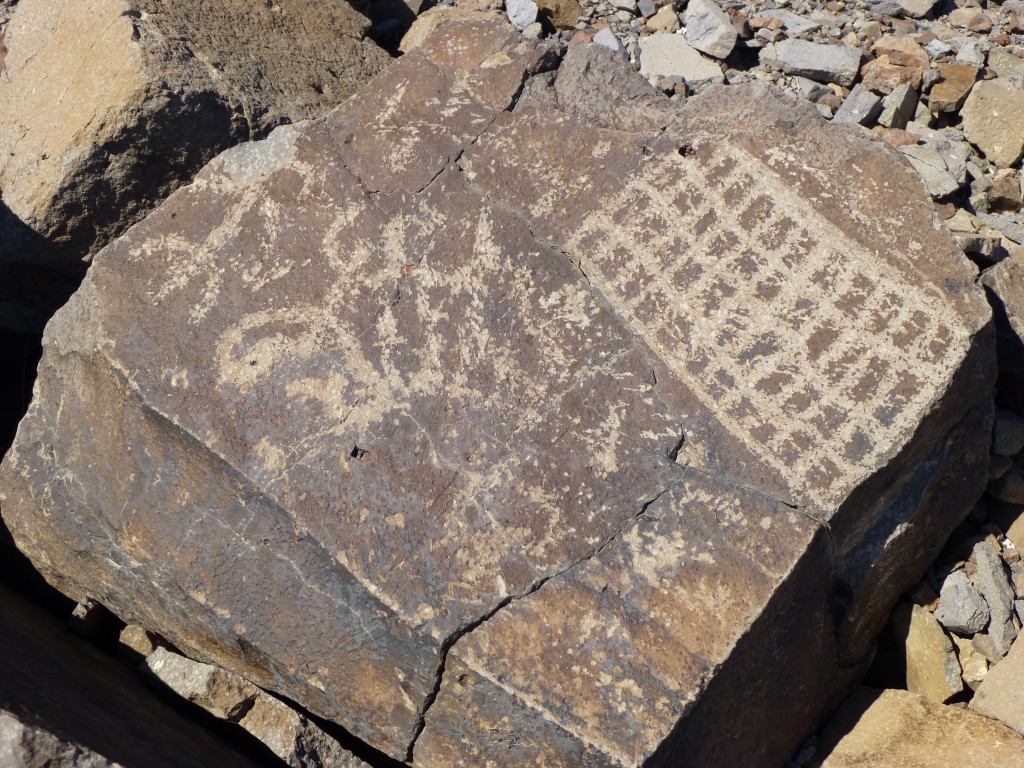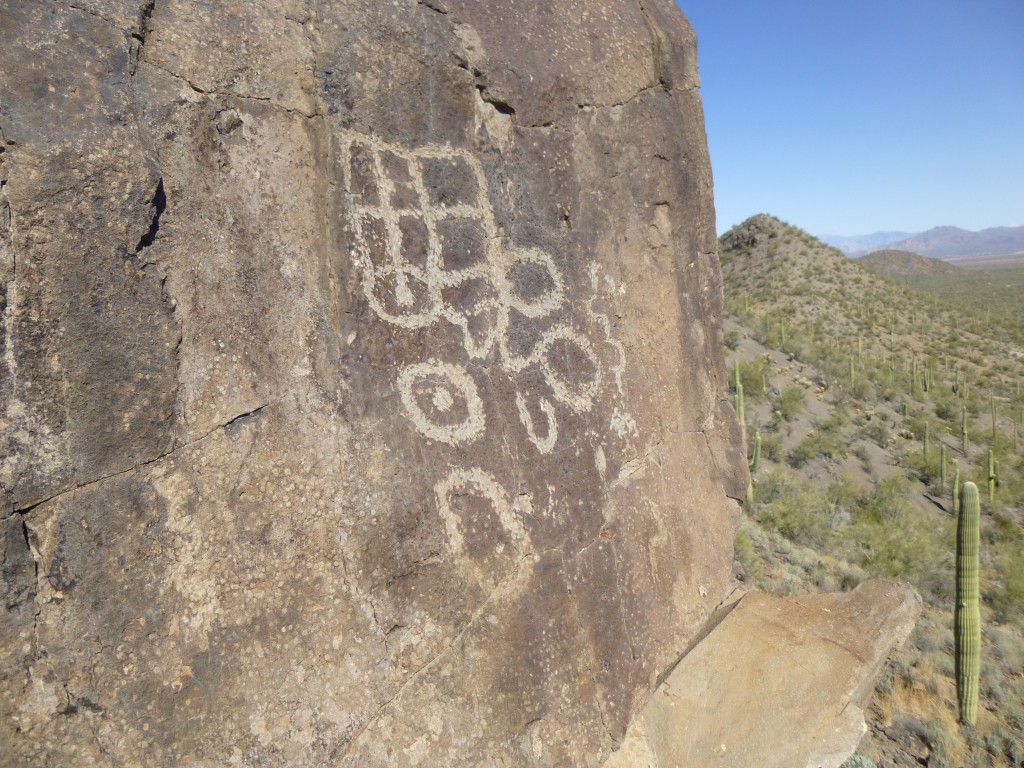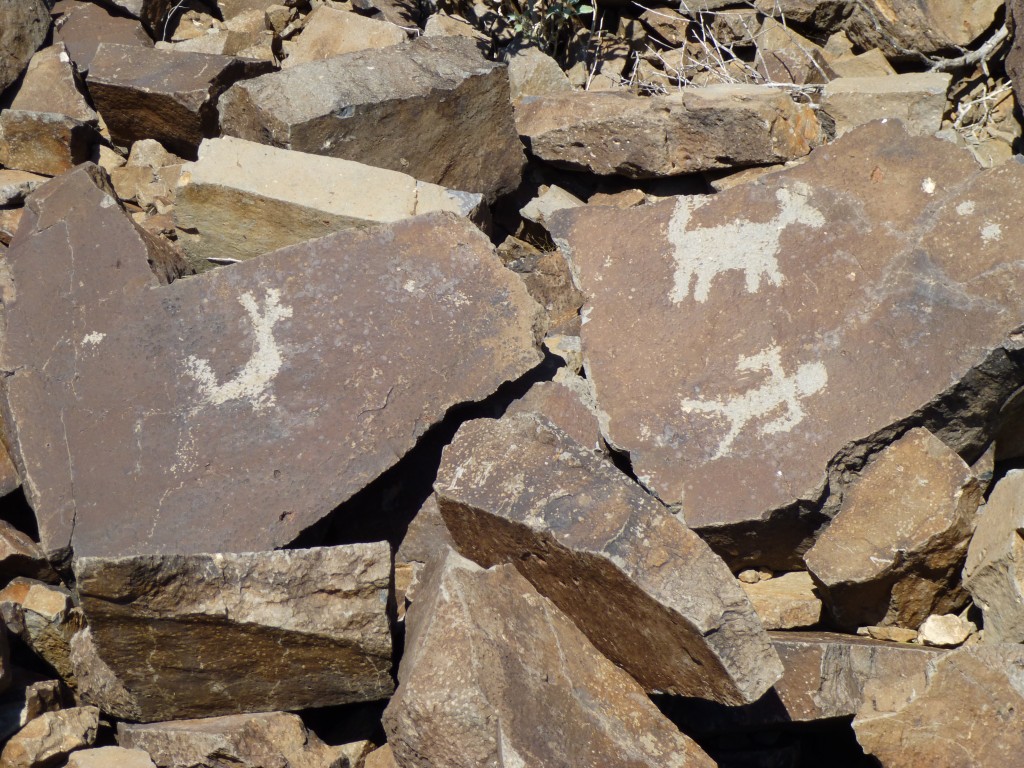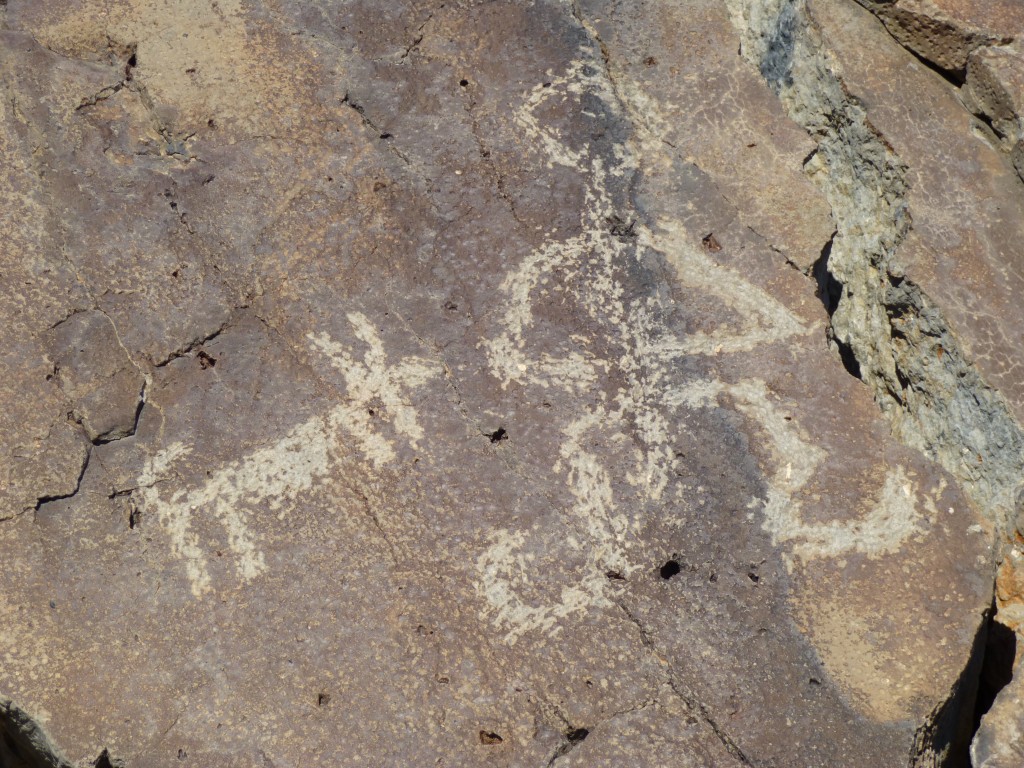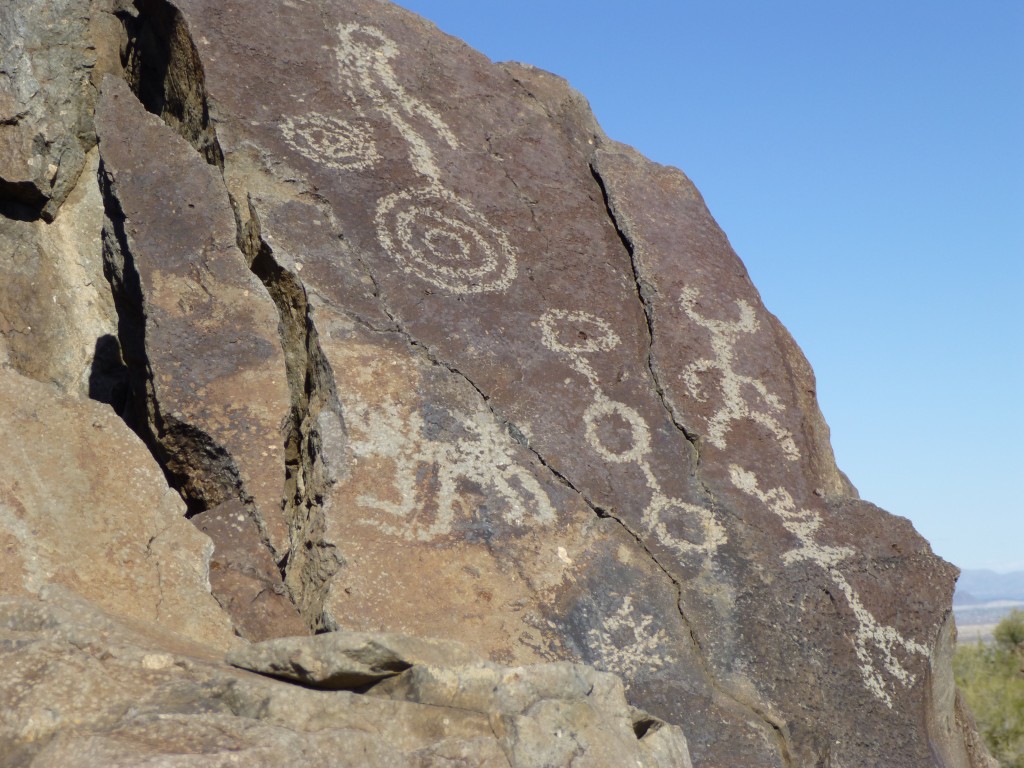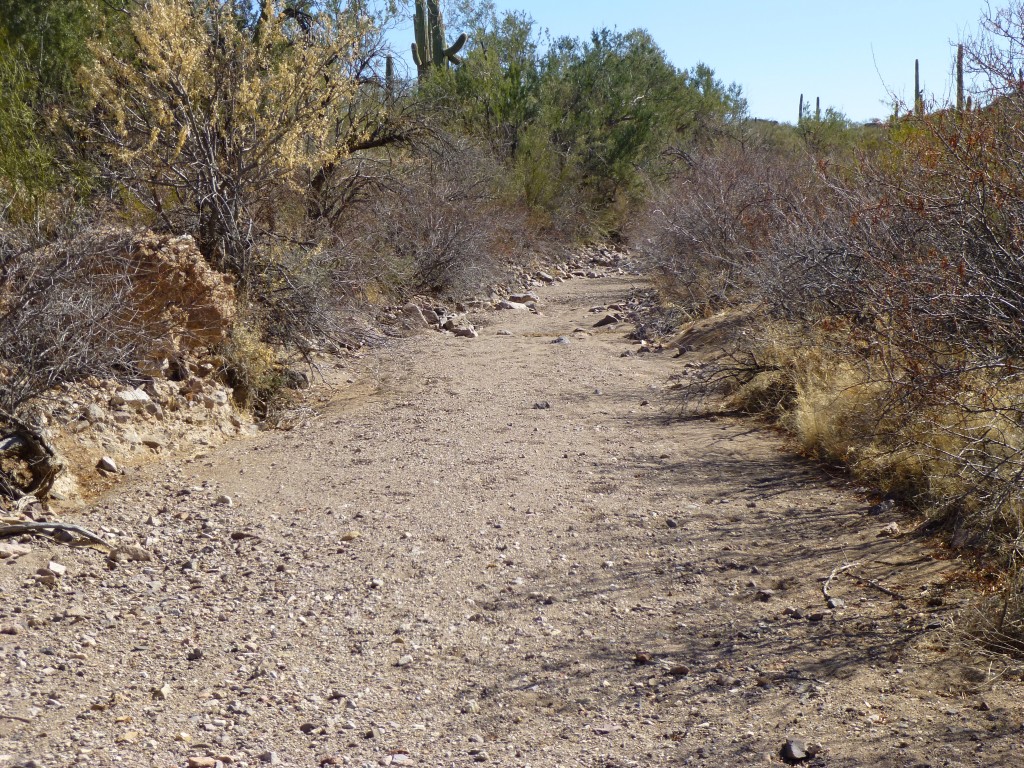About ten years ago, I had seen something amazing out in the desert. I had been alone and climbing up a mountain ridge and had come upon some Indian petroglyphs. A decade hadn’t erased the memory from my mind, although the details were a little fuzzy. I wasn’t even sure of the exact location. A check of the field copy of my map didn’t show anything for sure, but I thought I remembered which peak it was. So, one fine Saturday a few weekends ago, Willow and I headed out into the desert. We were going to try to find them again.
After a lot of driving on rough dirt roads, we came to a stop out in the middle of nowhere. Nearby was a guzzler, a feature made to collect water for wildlife. Basically, it is a large sloping concrete slab which collects rainwater that falls on it and directs it to a tank from which animals can drink.
We got ready to go, putting a lunch and not much else into one pack and setting out. My idea was that we would be able to follow a wash for some distance, pretty much right over to the area where I thought the petroglyphs were. You may remember that, in these parts, a wash is a streambed that is dry nearly all the time. We hadn’t gone far when we took a shortcut through some brush to cut off a large loop of the wash. I pushed on through it, but forgot to warn Willow that it was catclaw. Unsuspectingly, she snagged the back of her hand on the curved thorns and let out a holler. This plant, sometimes called the wait-a-bit bush or salsipuedes (which means “leave if you can” in Spanish), is truly nasty and not soon forgotten if you tangle with it. Once free, she and I continued.
We had been seeing cast-offs from indocumentados who had also used the wash as an avenue through the desert, the flotsam and jetsam of their passage. A little bit here or there was expected, but we weren’t prepared for what awaited us around one corner.
There were more than twenty packs lying in a heap, and Willow became very scared. She felt that the owners may be hiding in bushes nearby, watching us and planning mayhem on our persons. I tried to reassure her that that was unlikely, that the owners were probably long gone. In any case, we left right away and carried on. The likely scenario was that the Border Patrol had apprehended a large group here – they had been arrested, had dropped everything right there and had been led away.
Less than a half-hour later, we came to more open country where visibility was better. I thought I was looking at the ridge where I had found the drawings, but still couldn’t be sure until we were right on them.
A short walk brought us closer to the rocky rib that formed the spine of the mountain. Even from fifty feet away, I knew we had found the spot! I could see the drawings clearly from below. We were excited and quickly clambered up to the first ones. It was even better than I had remembered. I think the best thing I can do here is show you a series of photos of these ancient drawings, a kind of pictorial essay if you will. Petroglyphs are made by scraping off the weathered surface layer to reveal the lighter-colored rock beneath.
Although I’ve never tried to scrape one of these, I’d venture to say it takes a lot of effort and time.
Some of the petroglyphs seemed much more weathered, and probably older, than others.
Many of them were on rock walls, or large free-standing blocks of rock. Interestingly, some were on small rocks, portable enough that you could have put them into a pack and carried them off.
We don’t know how long ago they were made, but almost certainly a century or two ago, and possibly much, much older. Other petroglyphs in the desert southwest have been dated scientifically to six, seven and even eight thousand years of age.
The largest one shown in the picture below is eighteen inches tall. Most of them, though, were ten inches or less.
The higher up the ridge we climbed, the more prominent and numerous they were. It was easy to get the feeling that this was a place of spiritual significance. The view became better as we went up, more of the expansive desert coming into view, and it really was inspirational. We spent less than an hour in this wonderful place before heading back out, thinking about the amazing history we had seen. The picture below shows the wash we used to walk out. Although it may look like a road, it is actually a dry creek bed.
We have decided to not reveal the location of these petroglyphs. They are too beautiful and precious to have them ruined in any way. Oh yes, one last thing. I shot some short videos of the site and have posted on them on You Tube. Here they are – please enjoy.
Please visit our Facebook page at https://www.facebook.com/pages/Desert-Mountaineer/192730747542690

